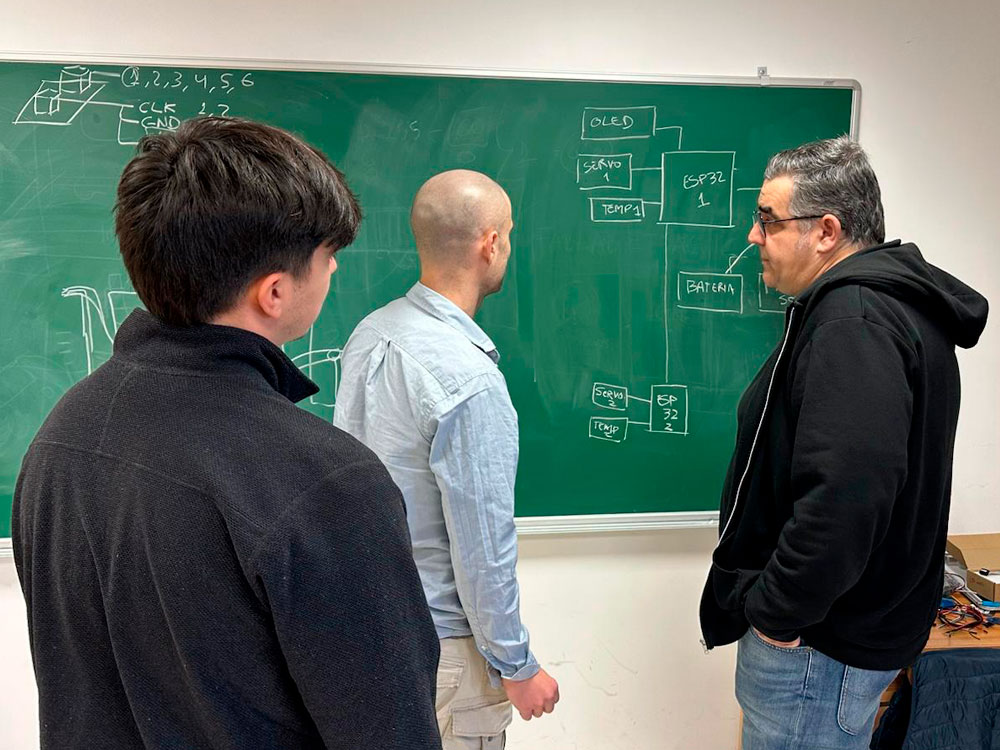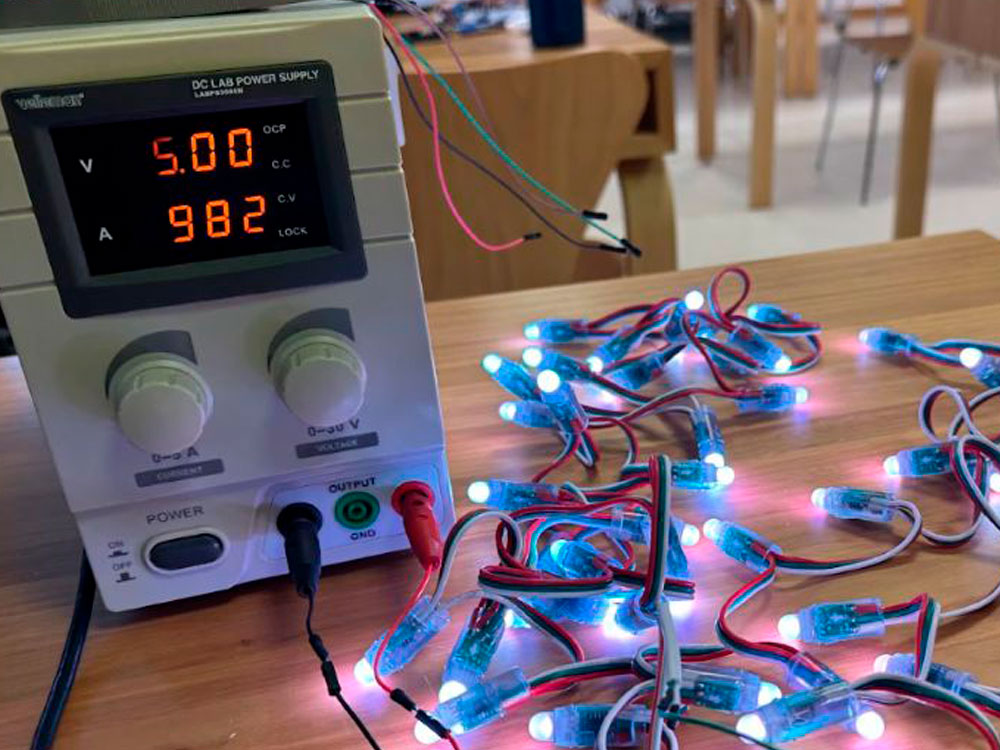Week 10
Output devices
Group assignment
- Measure the power consumption of an output device. Document your work on the group work page and reflect on your individual page what you learned.
LED module
As a first exercise, we prepared a test to measure the power consumption of a module consisting of 50 pcs DC 5V 12V WS2811 Full Color LED Pixel Light Module 12mm 10cm Wires IP68 Waterproof RGB Color Digital LED strings.
This is one of the modules that Pepe will use in his final project. We supplied 5V using a DC LAB power supply LABPS300SN. The current was 982 mA = 0.982 A, and the power consumption was 4.91 W
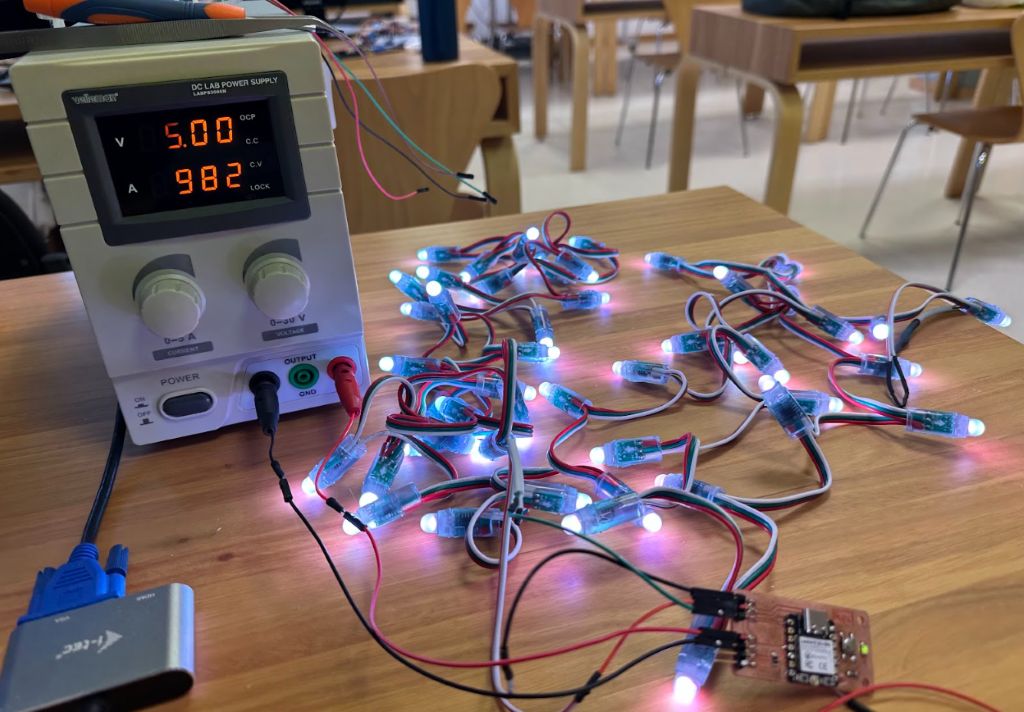
Next, we uploaded a code developed by Pepe that keeps three central LEDs permanently illuminated in blue while running a sequential lighting effect on both sides in red and green until all 50 LEDs are fully lit. They remain on for 6 seconds. We used Pepe's custom PCB, which features an external power input that supplies 5V to both the MCU and the LED module. In this test, the MCU was not connected to the laptop’s USB port, meaning all power came solely from the external power supply.
The peak current recorded was 764 mA = 0.764 A, and the power consumption was 0.764 A x 5 V = 3.82 W.
OLED Display
For the next test, we used a 0.96-inch OLED screen with a 128x64 pixel resolution, based on the I2C SSD1306 driver. Following Luis's recommendation, we first measured the power consumption of the Xiao ESP32C3 without any peripherals connected.
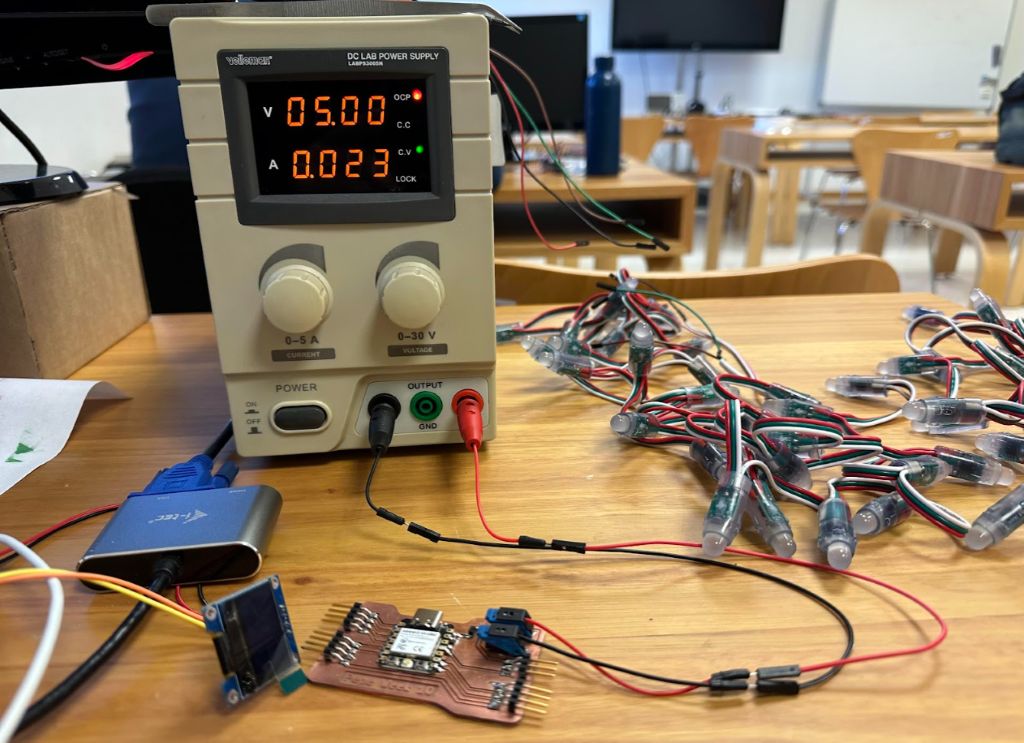
Our power supply indicated a current of 23 mA = 0.023 A and the power consumption was 0.023 A x 5 V = 0.115 W
Next, we connected the OLED screen. As shown in the attached image, the current increased to 29 mA.= 0.029 A and the power consumption was 0.029 A x 5 V = 0.145 W.
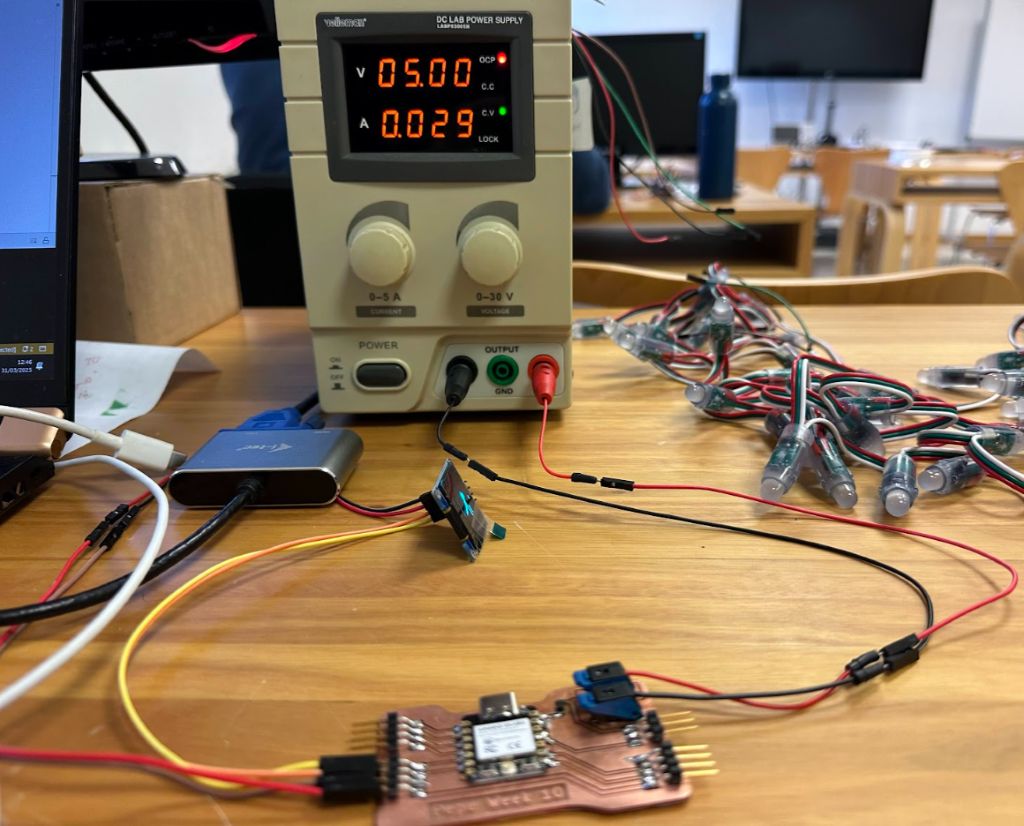
To determine the OLED’s specific power consumption, we inserted a multimeter into the circuit, which measured a OLED specific current: 3.9 mA = 0.0039 A , while the total power consumption was 0.0039 A x 5 V = 0.0195 W
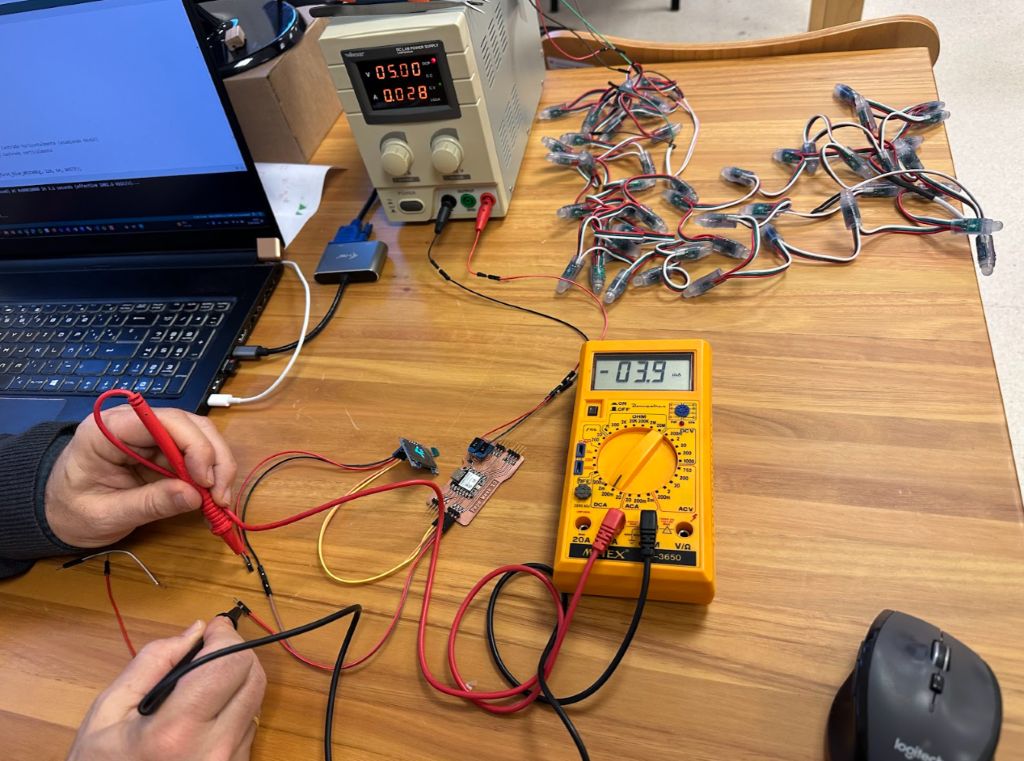
Finally, we uploaded a test script to the OLED screen to measure its power consumption when displaying illuminated pixels. The current increased by 18.7 mA = 0.0187 A, reaching a total of 44 mA = 0.044 A, as shown in the image and the power consumption was 0.044 A x 5 V = 0.22 W. Additional draw due to screen content: 18.7 mA = 0.0187 A. The extra LED power usage was 0.0187 A x 5 V = 0.0938 W
Summary table
| Device/Condition | Current (A) | Voltage (V) | Power (W) |
|---|---|---|---|
| WS2811 LEDs (all on) | 0.982 | 5 | 4.91 |
| WS2811 LEDs (running effect) | 0.764 | 5 | 3.82 |
| Xiao ESP32C3 only | 0.023 | 5 | 0.115 |
| OLED (idle, connected) | 0.0039 | 5 | 0.0195 |
| OLED (displaying content) | 0.0187 | 5 | 0.0935 |
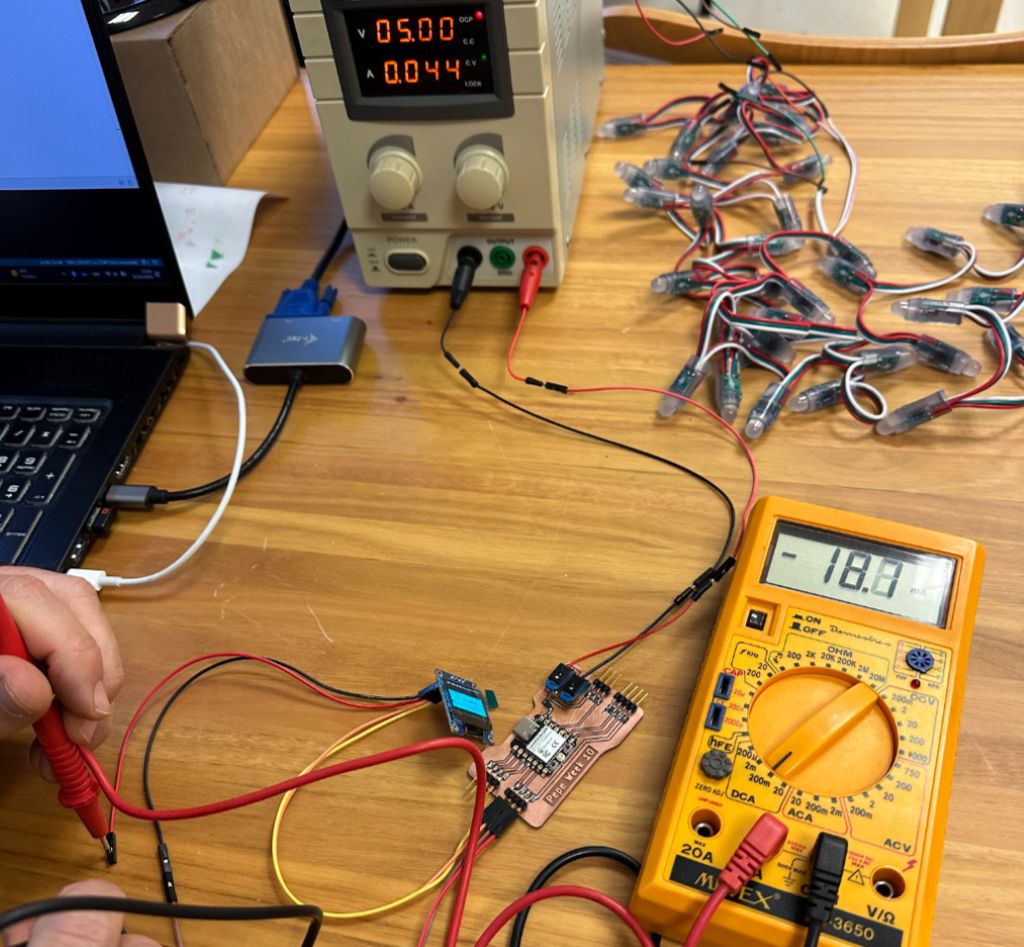
Through these experiments, we learned how to measure the power consumption of two output devices that we will use in our final projects.
